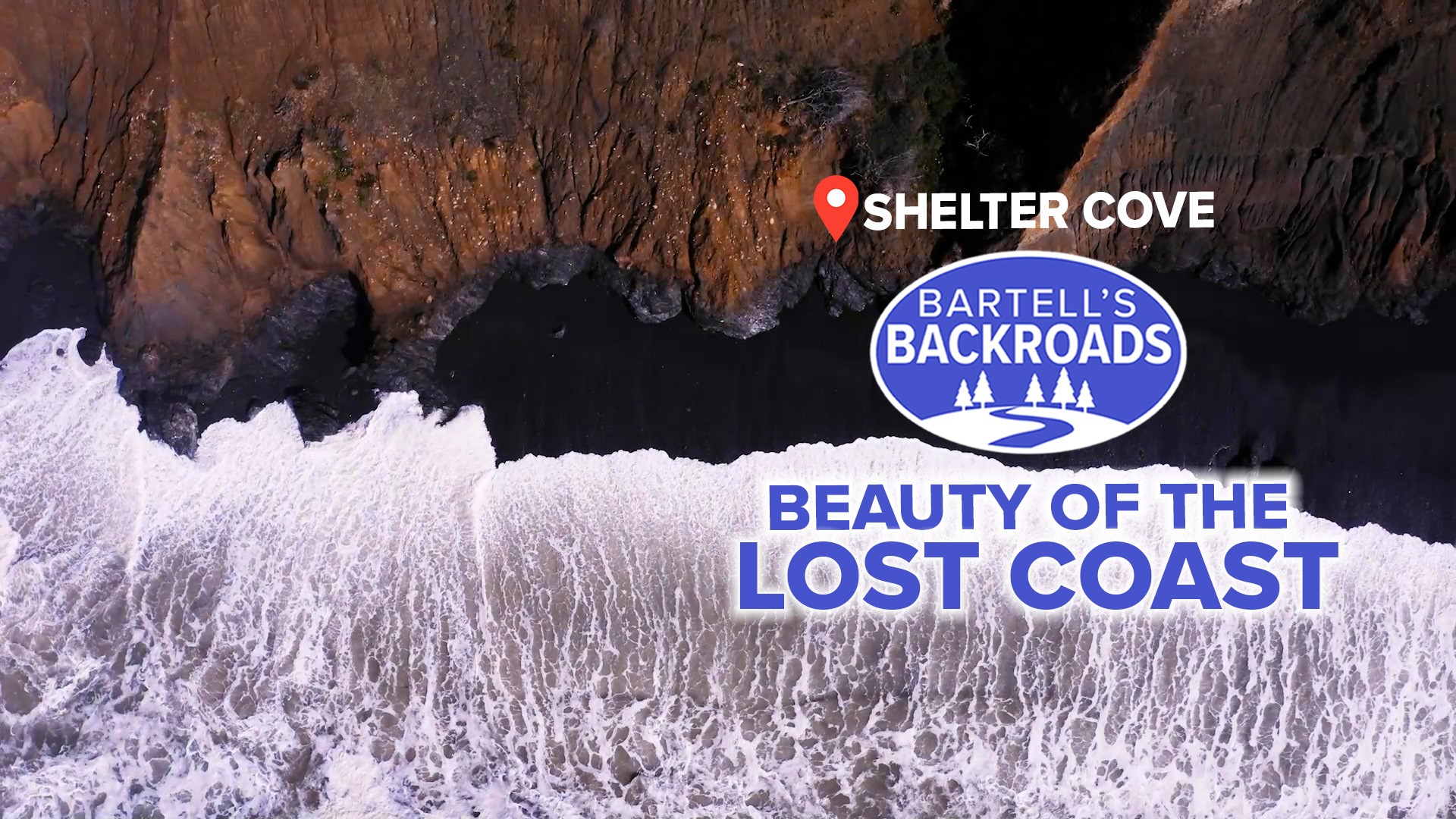SHELTER COVE, Calif. — If there is one place where beauty and violence can co-exist, California’s Lost Coast might be the place.
It took millions of years for earthquakes and pounding waves to create the stark coastal cliffsides and black sand beaches.
The terrain is so rugged in this area, engineers were forced to build Highway 1 around it, but clinging to the Lost Coast’s cliffside is the remote town of Shelter Cove.
From October to about the end of March is the stormy season in Shelter Cove. It is one of the rainiest regions in California. Blue skies are so rare this time of year that longtime resident and native, Blu Morning Graham, was named after it.
“November 1972, it rained for a month straight and the day I was born it cleared off, hence the name Blu Morning,” he said.
Graham runs Lost Coast Adventure Tours, which specializes in overnight hiking trips along the Lost Coast Trail, weaving through the redwoods of the King Range National Conservation Area and the coastal cliffs of the Sinkyone Wilderness.
“This is the largest stretch of uninterrupted coastline in the continental U.S. that is uninterrupted by towns," Graham said. "You have Shelter Coast in the middle, but you have 25 miles of coast up that end, and 28 miles the other end."
It’s not uncommon for hikers to tiptoe through tide pools, then walk by herds of grazing elk, but the most iconic features are the black sand beaches accompanied by massive crashing waves.
“It’s called a shore break, so it goes from really deep to really shallow really quickly,” Graham said.
As rough as the water is, Shelter Cove got its name from a small cove protected from the waves. Russian fur traders were among the first to use Shelter Cove in the 17th Century. Later, California loggers and fishermen moored their boats here.
“There were over 100 vessels out here called the Mosquito Fleet, and they were just little wooden vessels... 17-footers, 22-footers,” Graham said.
Commercial fishing employed the town for many years until California regulations killed the industry. Today, sport fishing boats and tourism are the economic drivers.
In the 1960s, a group of developers bought land and attempted to create a coastal community with an airport, but a few years into the project, an accident happened.
“They crashed leaving here and ended up in the ocean,” Graham said.
Sadly, 17 of the 23 developers and salesmen aboard died. Following the crash, a slew of other problems, including zoning issues, stalled development to this day.
“We like it. We like the small-town vibe we have, but it's tough. If you need to go to the bank or get food, you have to go to a bigger city,” says Graham.
It takes a tough person to weather the violent storms and travel the rugged coast, but that is the beauty of the place. If it was if it was easy to get here, it wouldn’t be the Lost Coast.
RELATED: Lassen County's jalopy rope tow is at the heart of Coppervale Ski Area | Bartell's Backroads
ABC10: Watch, Download, Read
Watch more from the Backroads
A visit to the new "micronation" of Slowjamastan | Bartell's Backroads



















